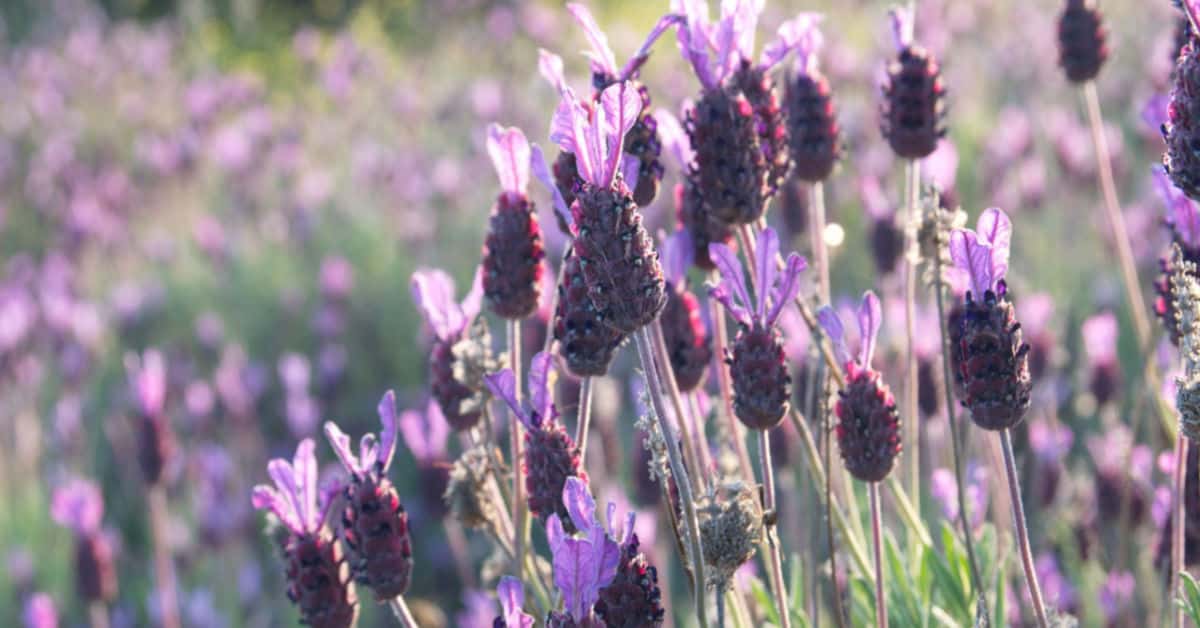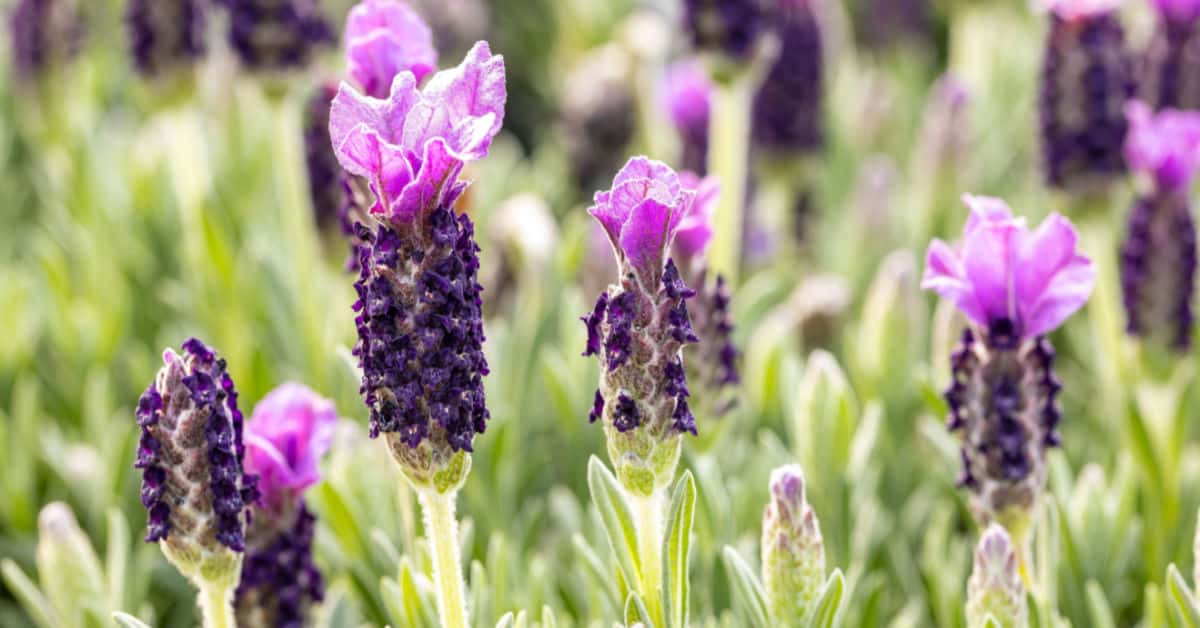Spanish Lavender is one of the many varieties of lavender, with unusual upright purple petals on flower heads that give it a butterfly-like appearance.
| Botanical Name | Lavandula stoechas |
| Common Name | Spanish Lavender, Butterfly Lavender |
| Plant Type | Perennial |
| Flower Color | Dark purple scented flowers |
| Size When Mature | 12 to 16 inches |
| Bloom Time | Summer |
| Sun Requirements | Full sun |
| USDA Hardiness Zones | 7 to 10 |
| Soil PH Range | 6.5 to 7.5 |
| Soil Type | Well-drained, sandy |
| Water Needs | Medium |
| Native Area | Africa, Mediterranean |
What you Need to Know About Lavandula Stoechas
Lavandula Stoechas, or otherwise known as Spanish Lavender, is a warm-loving perennial shrub that has uniquely shaped flowers. In summer, the plant produces tall flower heads with bright purple petals that resemble a resting butterfly.
Both leaves and flowers carry a strong yet superbly pleasant scent that fills up the yard or garden during the summer season. However, you’ll want to keep it away from your pets as the shrub is toxic to animals. Butterfly lavender, much like other lavender plants, is very easy to grow and requires minimal care and supervision once established.
How to Care for the Lavandula Stoechas
Here’s everything you need to know about growing and caring for a thriving Spanish Lavender
Light
Spanish Lavender is a tame and low-growing shrub that only reaches up to 16 inches tall and 18 inches wide. It makes for a wonderful container plant and an interesting houseplant specimen under the right conditions.
This species of lavender thrives in hot weather and prefers to stay in direct sunlight throughout the day. In regions where winters are mild and summers are hot, the Lavandula Stoechas has a branching and wider form. In colder regions, your butterfly lavender will have a compact growing habit.
Full sunlight is a must if you wish to see the characteristic purple bracts atop inflorescences. Spanish lavender plants tend to grow better and faster and become more fragrant the longer they stay under the sun. The shrub can be brought indoors but it grows better outside. Partial shade or full shade equal longer and weaker stems.
Water and Soil Needs
The lavender species grows in the wild with abundance, needing only gravel and the occasional rain to spread. This should give you an idea of how tough lavenders are and will dictate the water and soil needs when you bring a Lavandula stoechas home.
The butterfly lavender will accept nearly every type of soil except heavy clay and waterlogged medium. If you wish to simulate its environment, then you can mix garden soil and gravel or sand in a 50-50 ratio. The idea is that it should be extremely well-draining and not hold a lot of water. The plant prefers alkaline soil, which can be achieved by adding lime.
You’d probably be forgiven for watering your lavender sporadically. The shrub is highly drought tolerant, even in USDA zones 9 or 10. However, if you want full foliage and abundant flowers then you should keep a close eye on the soil moisture. When the top inch or two of the soil is dry then you should water deeply. Avoid watering overhead as it can introduce fungal diseases.
Temperature Requirements
A hot and dry environment works very well for lavender plants in general. Lavandula stoechas has a slightly higher tolerance for higher temperatures, but it’s a bit more sensitive to the cold. Regions that experience winters of 10 degrees F or less may not be able to grow a Spanish lavender in their yard or garden.
Spanish lavender is rated hardy in USDA zones 7 through 10.
Fertilizer
The best fertilizer to use on Lavandula stoechas is a slow-release and balanced fertilizer given once every growing season.
Generally speaking, lavender shrubs do not require feeding, but the plant can make use of the extra nutrients in the soil. You can choose a standard granular fertilizer or a slow-release fertilizer depending on what you have or what other plants are in your garden.
For standard fertilizer, it’s recommended that you measure a dose at half-strength and feed your lavender at the start of the spring season. For the slow-release type, sprinkle fertilizer according to the manufacturer’s instructions and only once during the growing season.
Common Diseases
Most lavender species are not affected by serious pests and diseases, and the Spanish lavender is no exception. As long as you put your lavender plant in full sun and do not overwater it then the shrub should thrive.
Butterfly lavender attracts pollinators and beneficial insects such as bees and butterflies. Furthermore, it’s rabbit and deer-resistant so you won’t have to worry about foraging animals in summer and fall. Common pests such as spider mites and aphids can attack a weakened or stressed plant, but you can get rid of them easily with a spray of neem oil or insecticidal soap.
Spanish Lavender Propagation
There are two ways to propagate Lavandula stoechas- by seed or by taking cuttings.
Start the seeds indoors in well-draining soil and cover the tray to create a greenhouse effect. Put two or three per cell and keep the soil constantly moist. The seeds should sprout in about 7 to 14 days. Once the leaves sprout, move them where they can get full sunlight. Repot or transplant into the ground in the spring and when the plants are big enough for it.
You can take cuttings from an established or mature Spanish lavender shrub in spring or fall. The best specimens are young wood and those that haven’t flowered. Not all cuttings may take root, so it’s best to take several so you have a higher chance to end up with a rooted plant.
Remove the lower leaves of the cuttings, then prepare a sandy soil mix and stick them in it. You can add a plastic bag over the top and cover the stem to keep the soil moist for longer. Alternatively, you can put the cuttings in a glass of water until you see roots appear.


